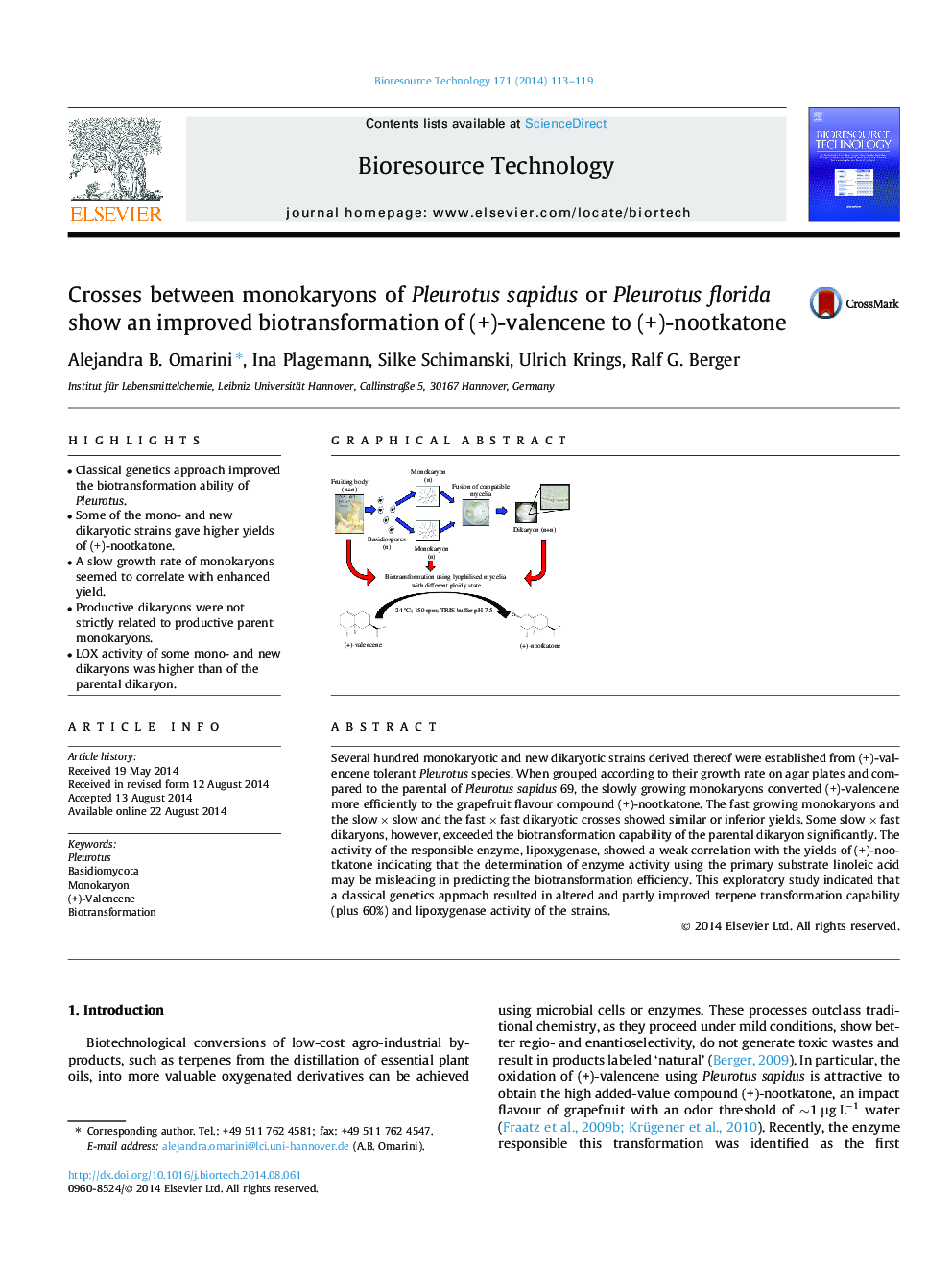| کد مقاله | کد نشریه | سال انتشار | مقاله انگلیسی | نسخه تمام متن |
|---|---|---|---|---|
| 680384 | 1459972 | 2014 | 7 صفحه PDF | دانلود رایگان |

• Classical genetics approach improved the biotransformation ability of Pleurotus.
• Some of the mono- and new dikaryotic strains gave higher yields of (+)-nootkatone.
• A slow growth rate of monokaryons seemed to correlate with enhanced yield.
• Productive dikaryons were not strictly related to productive parent monokaryons.
• LOX activity of some mono- and new dikaryons was higher than of the parental dikaryon.
Several hundred monokaryotic and new dikaryotic strains derived thereof were established from (+)-valencene tolerant Pleurotus species. When grouped according to their growth rate on agar plates and compared to the parental of Pleurotus sapidus 69, the slowly growing monokaryons converted (+)-valencene more efficiently to the grapefruit flavour compound (+)-nootkatone. The fast growing monokaryons and the slow × slow and the fast × fast dikaryotic crosses showed similar or inferior yields. Some slow × fast dikaryons, however, exceeded the biotransformation capability of the parental dikaryon significantly. The activity of the responsible enzyme, lipoxygenase, showed a weak correlation with the yields of (+)-nootkatone indicating that the determination of enzyme activity using the primary substrate linoleic acid may be misleading in predicting the biotransformation efficiency. This exploratory study indicated that a classical genetics approach resulted in altered and partly improved terpene transformation capability (plus 60%) and lipoxygenase activity of the strains.
Figure optionsDownload as PowerPoint slide
Journal: Bioresource Technology - Volume 171, November 2014, Pages 113–119